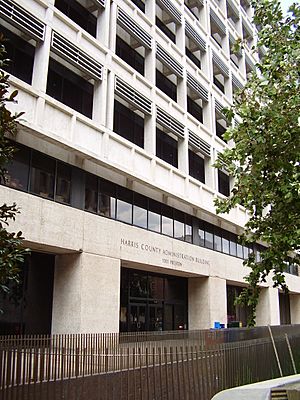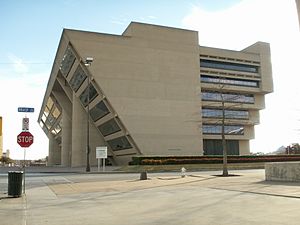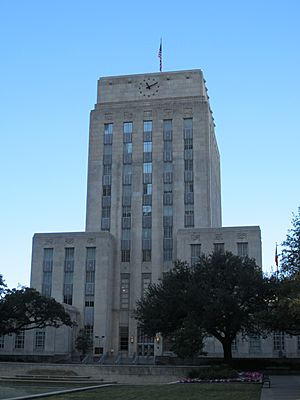Administrative divisions of Texas facts for kids
Texas is a huge state in the United States. It has many different parts that help run things, like 254 counties, lots of cities, and special groups called "special districts." The most common type of special district helps run schools.
Contents
Counties in Texas
Texas has 254 counties, which is more than any other state!
Counties in Texas have limited power to make their own laws. They can only create rules when the state government specifically allows them to. For example, counties usually cannot decide how land is used (this is called "zoning"). However, they can collect a small part of property taxes. They use this money to provide important services for people living there. Counties can also control outdoor lighting near places like observatories or military bases.

Unlike some other states, Texas does not allow cities and counties to combine into one government. But cities and counties can work together! They can make "interlocal agreements" to share services. For example, a county might collect property taxes for a city and a school district. This means people get one tax bill instead of three.
Cities in Texas
In Texas, an area is either part of a city (incorporated) or not part of a city (unincorporated). If an area is incorporated, it means it's inside a city. The city provides services, but sometimes it can ask the county for help. If an area is unincorporated, it's not part of any city. In these areas, the county is in charge of things like law enforcement and road maintenance. Cities usually write down their local rules and laws in a "code of ordinances."
How Cities Are Governed
Cities in Texas are either "general law" or "home rule." A city can become "home rule" if it has more than 5,000 people and its voters agree. A "home rule" city can write its own special rulebook, called a city charter. This charter cannot go against the state's main laws or constitution. If a city is not "home rule," it is "general law." General law cities have only the powers that the state laws specifically give them.
One big difference is how cities can grow. General law cities need permission from property owners to add nearby areas. But home rule cities can add nearby areas without permission. However, they must provide important services to these new areas within about three years. If they don't, the property owners can ask to leave the city and get their money back. Once a city becomes "home rule," it stays that way even if its population drops below 5,000.
Adding New Areas (Annexation)
Very large cities (with over 225,000 people) have a special power called "limited annexation." This means they can add a nearby area for specific reasons, like making sure building safety rules are followed. People in these "limited annexation" areas can vote for mayor and city council members. But they cannot vote in elections about city bonds (money the city borrows). This also means the city cannot directly collect sales tax or property tax from these areas.
The main reason for "limited annexation" is to help a city plan how an area will grow before it fully becomes part of the city. The city is supposed to fully add the area within three years. During this time, the city plans how the land will be used and what improvements are needed. It also figures out how to pay for these things and provide city services.
City Elections
City elections in Texas are "nonpartisan." This means that candidates do not have their political party listed next to their name on the ballot. They also don't run as a team from a specific party. However, people usually know which political party a candidate belongs to. Sometimes, a group of citizens will support a team of candidates they want to see elected. But voters must choose each candidate individually.
Special Districts
Besides cities and counties, Texas has many "special districts." These are groups created for a specific purpose. The most common type is the independent school district. Other special districts include groups that manage groundwater, river authorities, port authorities, water supply districts, public hospitals, road districts, and community college districts.
School Districts
Independent school districts have their own board of trustees. This board is separate from any other government group, except for one special case, the Stafford Municipal School District. School district boundaries often do not match city or county lines. It's common for a school district to cover parts of one or more counties. Also, a large city might have several different school districts serving its area.
Just like city elections, school board members are elected without showing their political party. Sometimes, they might be appointed instead of elected.
The Texas Education Agency is the main group that oversees public education in Texas.
See Also
- Government of Houston
- Government of San Antonio
- Government of Dallas




